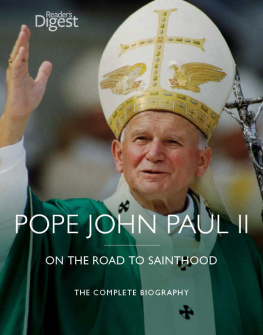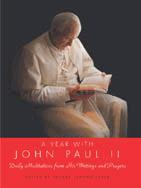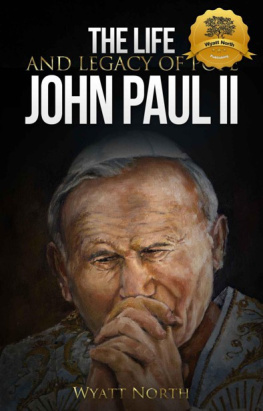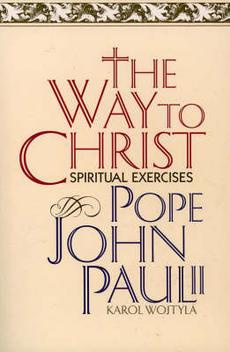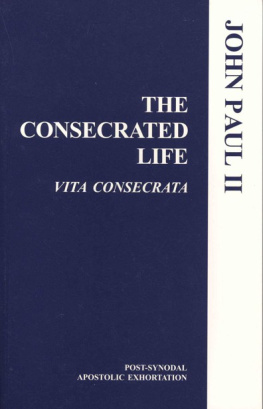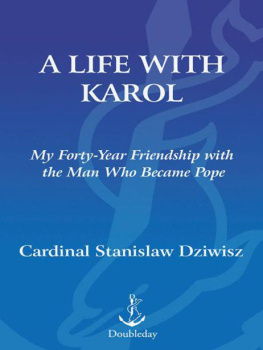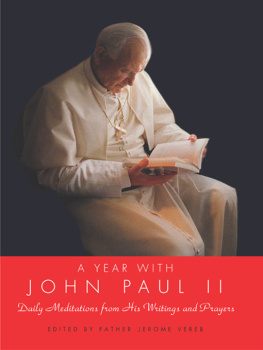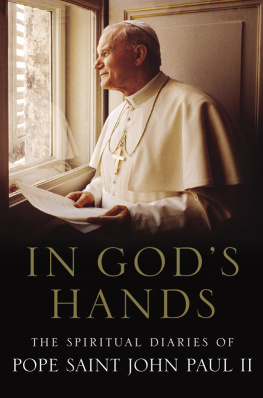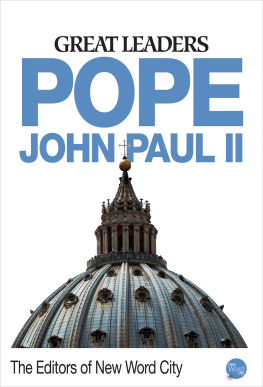T o understand the story of John Paul II, the first Polish pope, you must know something about the history of his country. Poland and the Roman Catholic Church have more than 1,000 years of shared trials and triumphs. The Slavic peoples who lived in the area of present-day Poland were first united in the tenth century under the Piast dynasty; at the same time, they were converted to Christianity. The Roman Catholic Piast dynasty managed in its 400-year history to establish a cosmopolitan empire that included Poles, Germans, Rutherians, Flemings, Walachians, Jews, Armenians, and even Tartars. The University of Krakw, founded in 1364, reflected this religious and political tolerance.
POLANDS GOLDEN AGE
When the last Piet king died, the great Lithuanian prince, Jagiello, married the young queen of Poland, Jadwiga, and founded his own dynasty. In 1385 he initiated a long process of consolidation between Lithuania and Poland, which culminated in the signing of the Treaty of Lublin in 1569, providing for a joint Sejm (parliament), king, and foreign policy. During the fifteenth and sixteenth centuries the Republic of Two Nations, under the Jagiellonians, was one of the greatest European powers, controlling lands from the Baltic Sea in the North to the Black Sea in the South. When the Jagiellonians died out in 1572, an aristocratic republic was created in which the landed nobility elected a Polish king.
In the western territories of the Republic of Two Nations, people enjoyed peace, some prosperity, and religious tolerancea rarity at that time in Europe. It was the most diverse state in Europe in regard to languages, nationalities, and religions. This was Polands golden age. Extraordinary examples of Romanesque, Gothic, and Renaissance architecture from this period are still seen in Poland. Nicolaus Copernicus, the renowned astronomer and humanist, was born in Poland in 1473. He studied at the University of Krakw and was the first to theorize that Earth and other planets revolve around the sun. Until that time Earth was considered to be the center of the universe. Mikolaj Rej, the first significant writer in the Polish language, lived from 1504 to 1569. Poet Jan Kochanowski (15301584) wrote the first Polish tragedy, The Dismissal of the Greek Envoys, as well as humorous poems and cycles of sorrowful poems that are still read and performed to this day.
LOSS OF AUTONOMY AND PARTITION
In the seventeenth century, however, the Polish-Lithuanian Republic fell prey to its Russian and Swedish neighbors, who annexed great tracts of territory without facing serious opposition. In this period, known as the Deluge, a joint Cossack and Russian invasion put the entire eastern half of the country under the tsar.
A Swedish assault on Warsaw in 1655 seemed to signal yet another humiliating Polish defeat until, during 44 days of the Christmas season, a small band of monks and knights fought off the Swedes at the Battle of Czestochowa and sent them into retreat. This great victory was credited to the Virgin Mary and is still one of Polands most sacred military miracles.
Czestochowa is an ancient town between Warsaw and Krakw, famous for its Pauline monastery that sits on a hill called Jasna Gra (Luminous Mountain). The monastery houses the shrine of the Virgin of Jasna Gra, or the Black Madonna. The Madonna is a Byzantine icon, said to have been painted by Saint Luke the Evangelist on a wooden plank that served as the Holy Familys table at Nazareth. She is called the Black Madonna because her face and hands and those of the child she holds in her arms have darkened with age. Her defense of Catholic Poland against the Protestant Swedes made the Polish king proclaim her the Queen of the Crown of Poland. The Black Madonna is still the most venerated Marian icon in Poland; her shrine draws thousands of pilgrims throughout the year.
CHALLENGE FROM THE TURKS
A brilliant victory against the Turks in 1673 brought the Polish crown to Jan Sobieski in 1674. Notwithstanding his seminal victory over the Turks outside Vienna in 1683, which prevented an Ottoman invasion of Europe, he was never able to regain all the southeastern lands that Poland had lost to the Ottomans. The Republic of Two Nations continued to lose ground. Finally, in 1697, the electors of Saxony took over the Polish throne, and the country lost its name and its independence.
By the end of the eighteenth century, Poland had been partitioned three separate times among three powerful neighbors: Prussia, Russia, and Austria. For the most part, all through the nineteenth century, what once was Polish territory formed the borders of these monarchies: Protestant Hohenzollerns in Prussia to the west, Orthodox Romanovs in Russia to the east, and Roman Catholic Hapsburgs in the Austro-Hungarian Empire to the south.
HELP FROM NAPOLON
The one exception was a brief period starting in 1807 when Napolon, moving east, created the Duchy of Warsaw from land around the city and introduced the Napoleonic Code, which freed the peasants. (Without land, this freedom gave the peasants no advantage.) The Duchy of Warsaw acquired Galicia, a historic region south of Warsaw, in the War of 1809. Napolons disastrous failure in Russia, however, doomed the Duchy to Russian control by 1813.
Several failed insurrections in the nineteenth century brought reprisals from Polands tsarist rulers: Lands were confiscated, cultural and educational institutions were closed, and more than 20,000 Poles left their homeland. Prince Adam Czartoryski headed a group of exiles in Paris. Poets Adam Mickiewizt, Zygmunt Krasinski, Juliusz Slowacki, and Cyprian Norwid also sought more freedom in France. Composer and pianist Frdric Chopin, born and trained in Warsaw, made his career in Paris. Throughout these difficult times, however, Polish nationalism persisted.
POLAND IN WORLD WAR I
Poland became a pawn of the Germans and the Austrians during World War I, when each promised Poland autonomy in order to recruit more Poles into the fight against Russia. Some 800,000 Poles lost their lives in World War I. The Treaty of Versailles in 1919 settled the peace and mandated that the Republic of Poland be revitalized as an independent nation under Jzef Pilsudski. This heroic military leader also became head of state. The German emperor and king of Prussia, William II, surrendered to the Allies; Austria also surrendered to the Allies. The Austro-Hungarian Empire collapsed, and many of its states became independent countries. United States president Woodrow Wilson presented a peace program at Versailles known as the Fourteen Points. The thirteenth point demanded that an independent Polish state should be erected with free and secure access to the sea.
The Russia that began World War I on the side of France and Great Britain was not the same Russia that now disputed Polands eastern border. The tsarist regime had been toppled in February 1917. The following October a new political party, led by Vladimir Lenin, instigated a coup dtat that overthrew the new Russian parliamentary government, led by Aleksandr Kerensky. Lenin and his Bolsheviks quickly established a dictatorship. Their objective was to createwith force if necessarya Communist state, where the government would own everything, and the people would work on collective farms or in state-run factories and would theoretically share the bounty equally. In this new Marxist utopia there was no place for religion. Russias Orthodox churches were expropriated by the state and used for other purposes.

